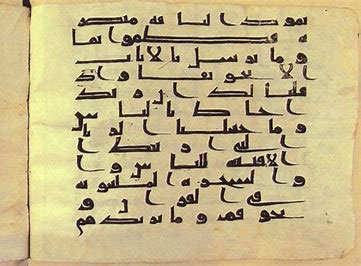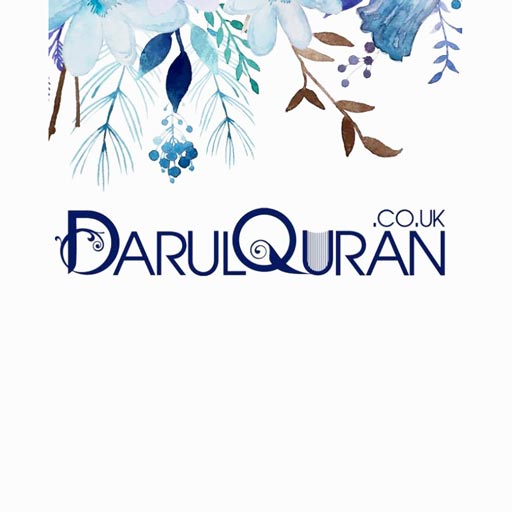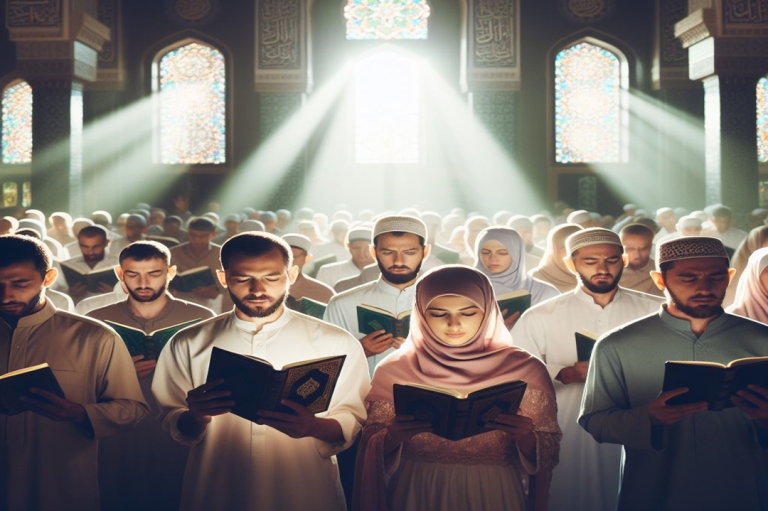“He who gives my ummah a hadith by which a Sunnah is stablished or is made a hole in a heresy, he deserves the Paradise.”
Prophet Muhammad (S)
Table of Contents
ToggleThe Holy Quran as the central religious text of Islam holds immense significance for millions of Muslims worldwide. Written in a unique script style it is essential to understand the characteristics and historical development of this script.
In this article we will explore the script style of the Holy Quran known as “Kufic ” and delve into its origins features and cultural significance.
Origins of Kufic Script
The Kufic script is one of the oldest forms of Arabic calligraphy and is closely associated with the early written copies of the Quran, the holy book of Islam.
The origins of the Kufic script are deeply rooted in the history of the Quran and the development of Islamic art and culture. This essay will explore the historical context, key figures, and the impact of the Origins of Kufic script about the holy Quran.
It will also identify and analyze influential individuals who have contributed to the field of Kufic script and discuss various perspectives while providing a well-reasoned analysis of the positive and negative aspects of the Kufic script.
Additionally, this essay will consider potential future developments related to the origins of Kufic script about the holy Quran.
The historical context of the origins of Kufic script about the holy Quran dates back to the early centuries of Islam.
The Kufic script originated in the city of Kufa, located in present-day Iraq, during the 7th century CE.
Kufa was a major center of Islamic learning and culture, and it played a significant role in the development of Islamic art and calligraphy.
The early Muslims, particularly during the time of the Rashidun and Umayyad caliphates, sought to preserve and disseminate Quran in a written form.
Thus, the development of the Kufic script was closely tied to the need to transcribe and preserve the holy text of Islam.
Key figures in the history of the Kufic script include early Islamic calligraphers and scholars who contributed to its development. One such figure is Ibn Muqla, an influential Abbasid-era calligrapher who is credited with standardizing the Kufic script. Ibn Muqla developed a system of proportionate lettering and calligraphic rules that became fundamental to the Kufic script. His contributions not only refined the aesthetic and technical aspects of Kufic calligraphy but also influenced subsequent developments in Islamic calligraphy.
The impact of the origins of Kufic Script about the noble Quran is multifaceted. On one hand, the Kufic script played a crucial role in the preservation and spread of the Quranic text.
As Islamic civilization expanded, so too did the use of the Kufic script in the transcribing of Quranic manuscripts, leading to the proliferation of beautifully written copies of the holy book.
The aesthetic appeal of Kufic calligraphy also contributed to its widespread adoption in architectural inscriptions, manuscripts, and decorative art, making it an integral part of Islamic visual culture.
On the other hand, the Kufic script’s historical impact also extends beyond the realm of Islamic calligraphy. Its development reflects the broader intellectual and cultural achievements of early Islamic civilization, particularly in the fields of literature, linguistics, and manuscript production.
The Kufic script exemplifies the sophisticated artistic and scholarly endeavors of early Muslim societies and their commitment to preserving and transmitting knowledge.
Influential individuals who have contributed to the field of Origins of Kufic script about the holy Quran include scholars, calligraphers, and art historians. For instance, the famous Persian calligrapher, Al-Bawwab, made significant contributions to the development of the Kufic script.
He specialized in the square Kufic style and was renowned for his mastery of geometric patterns and intricate designs. Additionally, the Iraqi scholar Yaqut al-Musta’simi was instrumental in preserving and documenting the diverse styles of Kufic calligraphy, thus ensuring the transmission of this rich heritage to future generations.
Another influential figure in the study of Kufic script is Dr. Mohamad Zakariya, a contemporary American calligrapher of Turkish descent who has dedicated his career to reviving and promoting the traditional Islamic calligraphic arts, including the Kufic script.
His efforts have helped to raise awareness of this ancient script and its significance, both within Muslim communities and the broader global audience.
The positive aspects of the Kufic script lie in its artistic and cultural significance, as well as its role in preserving the Quranic text.
The Kufic script’s aesthetic beauty and historical importance have made it an object of admiration and study among art enthusiasts, scholars, and practitioners of Islamic calligraphy.
Moreover, its enduring legacy continues to inspire contemporary artists and designers who seek to incorporate traditional Islamic aesthetics into modern creative expressions.
However, the negative aspects of the origins of Kufic script about the holy Quran are related to its potential marginalization in the face of modernization and globalization.
As contemporary societies undergo rapid changes, traditional art forms such as the Kufic script may face challenges in retaining their relevance and visibility.
The digitization of texts and the prevalence of electronic media also pose a threat to the longevity of traditional calligraphic practices, including Kufic script.
Nevertheless, the future developments related to the origins of Kufic script about the holy Quran offer opportunities for its continued preservation and adaptation. Efforts to revitalize and promote traditional Islamic calligraphy, including the Kufic script, are underway in various parts of the world. Collaborations between calligraphers, scholars, and cultural institutions can help to enhance the visibility and appreciation of the Kufic script, ensuring that it remains a vital part of Islamic cultural heritage.
In conclusion, the origins of Kufic script about the holy Quran are deeply intertwined with the history, culture, and artistic achievements of early Islamic civilization.
The Kufic script has left an indelible mark on the visual and literary heritage of Islam, and its legacy continues to be celebrated and studied in contemporary contexts.
By recognizing the historical significance and enduring appeal of the Kufic script, we can work towards sustaining its relevance and promoting its continued appreciation for future generations.

Features of Kufic Script
Kufic script is characterized by its angular and square-shaped letters. It lacks diacritical marks such as vowels and short vowels making it a purely consonantal script.
The absence of diacritical marks in the early copies of the Quranic manuscripts presented challenges in terms of pronunciation and interpretation. However, over time diacritical marks were introduced to aid in the correct recitation and understanding of the text.
Another notable feature of Kufic script is the absence of dots on certain letters. For instance, the letters “ba'” (ب) “ta'” (ت) and “tha'” (ث) are often written without dots which can pose difficulties for readers unfamiliar with the script. However, the context and placement of the letters within the word provide clues for pronunciation and interpretation.
Styles of Kufic Script
Kufic script evolved over time giving rise to various styles . Some of the prominent styles include:
- Square Kufic: This style is characterized by its box-like shape with letters placed within squares or rectangles. Square Kufic was commonly used for architectural inscriptions such as those found on mosques and tombs.
- Rounded Kufic: As the name suggests this style features rounded and curvilinear forms of letters. It is often used for decorative purposes such as in calligraphy and ornamental designs.
- Floral Kufic: This style combines Kufic script with floral motifs resulting in a visually intricate and appealing form of calligraphy. It is commonly found in Islamic art and manuscript illumination.

Cultural Significance of Kufic Script
Kufic script holds immense cultural significance within the Islamic world.
It is not only associated with the Holy Quran but also plays a vital role in Islamic art and architecture. The use of Kufic script in mosques mausoleums and other religious structures serves as a visual representation of Islamic identity and heritage.
Moreover, Kufic script is deeply intertwined with the history and development of Arabic calligraphy. It served as a foundational script style inspiring subsequent calligraphic scripts such as Naskh Thuluth and Diwani.
The mastery of Kufic script was considered a hallmark of skilled calligraphers and it continues to be taught and appreciated as an art form to this day.
In conclusion the script style of the Holy Quran is known as Kufic script.
Derived from the Nabatean Script Kufic script emerged in the city of Kufa Iraq. It is characterized by its angular square-shaped letters and the absence of diacritical marks.
Over time Kufic script evolved into various styles including square rounded and floral Kufic.
The cultural significance of Kufic script extends beyond Quran as it is an integral part of Islamic art and calligraphy.
Understanding the script style of the Holy Quran allows for a deeper appreciation of its historical and cultural context








